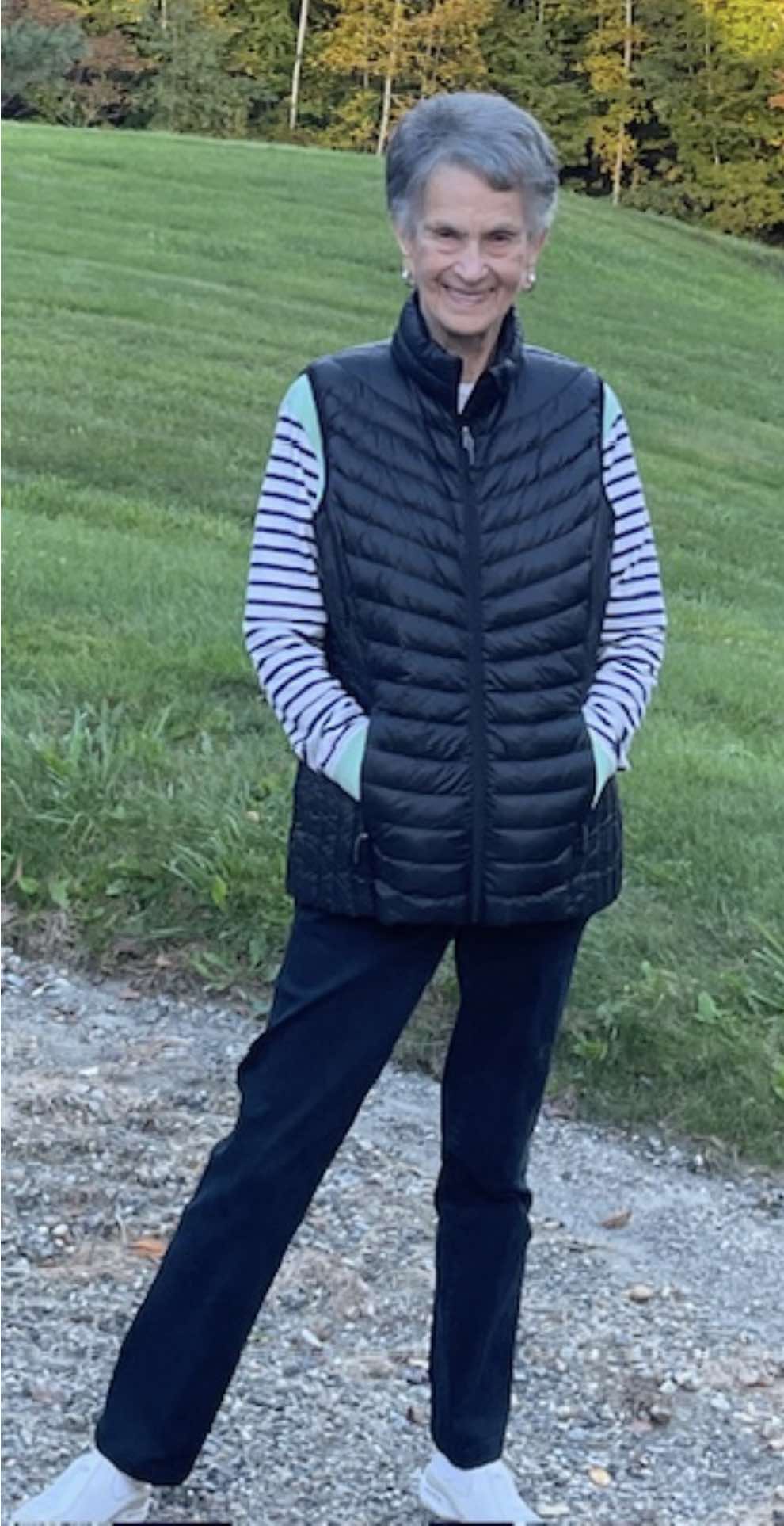Andrea Stewart-Cousins Says NY State Senate is "Ready to Meet the Moment"
- Details
- Written by: Joanne Wallenstein
- Hits: 185
 Here are remarks delivered by NYS Majority Leader Andrea Stewart-Cousins at the opening of the 2026 Legislative Session of the NYS Senate.
Here are remarks delivered by NYS Majority Leader Andrea Stewart-Cousins at the opening of the 2026 Legislative Session of the NYS Senate.
These are not times for complacency. These are times that demand clarity, responsibility, and focus.
We are beginning a New Year in a moment when the pressures facing New Yorkers feel heavier and more immediate in their daily lives. Families are opening utility bills they can barely afford. They are walking grocery aisles where prices rise faster than paychecks. They are worried about the cost of housing, health care and the overall cost of living. At the same time, many New Yorkers are watching with genuine concern as hard-won rights and constitutional freedoms are challenged across the country.
That is the reality our constituents are living with. It is the responsibility of the Senate, led by this Majority, to meet it head-on.
Understandably, there is a lot we do not know, and a lot we cannot predict. The uncertainty can feel overwhelming. But if there is one truth about our work, it is that we have been here before and every time, this chamber has risen to meet the moment.
In fact, we have already proven who we are in times of crisis.
When the chaos and division of Trump 1.0 tested the foundations of our institutions, it was this chamber that stepped forward to defend New Yorkers.
We will continue to be a clear and unwavering voice for what New Yorkers deserve from their federal representatives. For example, laws like the Shield Act were not abstract ideas. They are fundamental protections that matter, now, when people need them most. We showed the country that states could hold the line when Washington would not, and that government could still be a force for stability, fairness, compassion, and good.
In moments of crisis, when COVID brought the world to a halt and when a former Governor resigned in scandal, this chamber provided continuity and steadiness. You confronted what was uncomfortable, kept government functioning, and passed critical budgets under impossible conditions. We did it without losing our values or losing sight of the people we serve.
Those moments were not easy. But they reminded us of something essential. We know how to lead in uncertain times. We know how to confront the unimaginable. We know how to govern when the ground shifts beneath us, because we already have.
We know how to work together and reach consensus. We represent every corner of this state, from cities to suburbs, small towns to farmland. We represent districts that are safely Democratic or Republican, as well as districts that are competitive, moderate, and hard-fought. Our strength comes not from pretending one size fits all, but from understanding that New York works best when communities see themselves reflected in the various solutions we advance.
Ideology and principles matter. They guide us. They shape our priorities and our sense of justice. But governing also requires realism. The landscape ahead is complicated. The stakes are high. Navigating what comes next will require discipline, collaboration, and resolve.
In moments like these, we have to be adults in the room. We have to help set the tone and direction for the state. We must give a sense of security to our constituents who are living in unprecedented times of uncertainty. That is what the Senate has done under this Majority’s leadership. When Washington chose chaos, we delivered stability. When Washington offered rhetoric, we produced results. When Washington leaned into division, we focused on improving people’s lives in tangible, practical ways.
That is the standard New Yorkers expect from us as we move into this year.
We know what our communities need. We understand the challenges they face. We see the role the Senate, led by this Majority, must play, not just to respond to this moment, but to shape what comes next.
This session, our work continues to meet the affordability crisis head-on. We will tackle everything from the rising utility costs and the price of groceries, to promoting universal child care. We will continue strengthening a health care system that puts patients first. And we will stand firm in defense of voting rights and equal rights, with one of our central focuses being standing up for communities that are being targeted and marginalized, which includes protecting our immigrant brothers and sisters by advancing the goals of New York for All.
As we open this Legislative Session, let us do so with confidence, grounded in what we have already proven, clear-eyed about the work ahead, and united in our responsibility to deliver.
Because New Yorkers are counting on us. And this Senate, led by this Majority, is ready to meet the moment.
Andrea Stewart-Cousins holds the positions of President Pro Tempore and Majority Leader of the New York State Senate, and she is the Senator for the 35th District. As the longest-serving Democratic Majority Leader in New York State Senate history, and the first woman and African American woman to occupy this role, her tenure is distinguished by significant legislative achievements and a steadfast commitment to addressing the needs of New Yorkers.
Jill Haskel Passes Away at Age 89
- Details
- Written by: Joanne Wallenstein
- Hits: 2406
 Jill Newmark Haskel, born August 15, 1936, died suddenly on Monday, December 22, 2025. She was 89 years old.
Jill Newmark Haskel, born August 15, 1936, died suddenly on Monday, December 22, 2025. She was 89 years old.
Jill was born in Los Angeles, California as an only child to parents Richard and Jane Newmark. She graduated from Hollywood High School in Los Angeles and later from Tobe-Coburn School for Fashion (in more recent times was known as Wood Tobe-Coburn School in Manhattan). In 1958, she married Merwin R. Haskel, Jr.
Jill and Merwin raised their four sons—Brad, Bill, and twins, Jim and Tony—in Scarsdale, NY, where they were active members of their neighborhood and community. Jill was a dedicated mother, later becoming a loving mother-in-law to Amy (Bill) and Annie (Jim), and a proud grandmother to six grandchildren: Jake, Tommy, Jenny, Tess, Sam, and Eli. She was a cherished sister-in-law to Richard and Jane Haskel and Aunt to Patricia Freund, and Whit (and Lina) Haskel and their children Sofia, Sebastian, Lilith and Oliver.
Jill and Merwin shared nearly sixty wonderful years of marriage together, making their homes in Scarsdale, Hartsdale, and White Plains, as well as their beloved Stratton, Vermont. When Merwin passed away in 2017, Jill was faithfully by his side throughout his long and courageous battle with Alzheimer’s disease. A devoted family member and friend, Jill stayed in close touch with those she loved—always texting, calling, and checking in. She had a gift for connecting with people of all ages and backgrounds, leaving every community she joined better off. In her later years, Jill lived at The Osborn Senior Living Community in Rye, New York, where she became more active than ever. She filled her days with a wide range of activities—from regular trips to New York City for the Philharmonic and Broadway shows to attending her favorite Zumba classes. Her more than forty years of volunteer service at White Plains Hospital, along with a decade of work with the Alzheimer’s Association, reflected her deep compassion and unwavering commitment to others.
After her passing, countless friends have reached out to the family, sharing stories and fond memories that spoke to Jill’s kindness, compassion, and unwavering determination to help others. Though her loss is deeply felt, the legacy she leaves behind—and the example she set through her generosity and warmth—will continue to inspire generations to come.
Details regarding the celebration of Jill's life will be forthcoming. In lieu of flowers, donations can be made in her honor to White Plains Hospital, or the Alzheimer’s Association of Westchester.
New Rochelle Police Rescue Teenager Stranded on Rocks at Davenport Park
- Details
- Written by: Joanne Wallenstein
- Hits: 845
 On December 14, 2025, at approximately 5:15 p.m., New Rochelle Police received an urgent 911 call reporting that a 17-year-old male had slipped and fallen while on the rocks along the shoreline at Davenport Park.
On December 14, 2025, at approximately 5:15 p.m., New Rochelle Police received an urgent 911 call reporting that a 17-year-old male had slipped and fallen while on the rocks along the shoreline at Davenport Park.
The caller reported that the teenager had fallen near the water’s edge of the Long Island Sound but was not in the water and was unable to climb back up due to a minor back injury.
Officers from the New Rochelle Police Critical Incident Unit responded promptly, located the individual on the rocks near the water’s edge, and safely extracted him using rope rescue techniques. The teenager was brought back to land without further incident.
He was subsequently transported by ambulance to a local hospital for evaluation and treatment of his minor back injury.
The New Rochelle Police Department reminds the public to exercise extreme caution when near rocky shorelines, particularly during evening hours or in slippery conditions, as falls can occur quickly and rescue access can be difficult.
No further details about the individual’s identity will be released to protect privacy.
Chris Walsh Passes Away at 53
- Details
- Written by: Joanne Wallenstein
- Hits: 1027
 Christopher J Walsh, 53, of Bronxville, NY (formerly of Scarsdale and White Plains) died on December 7 after a brief illness, surrounded by family.
Christopher J Walsh, 53, of Bronxville, NY (formerly of Scarsdale and White Plains) died on December 7 after a brief illness, surrounded by family.
Chris was a devoted father, husband, brother, friend, and colleague. He is survived by Corinne, his wife of 28 years; his two sons, Christopher and James; and his siblings Kerry (Jerry), Tim (Kristine), Aileen (David), Meghan, and Maura; his nephews Patrick and Nicholas Walsh and his niece Julia Schast. He was preceded in death by his parents, Nora (Dowd) and John Walsh, and by Muffin, his treasured canine companion.
A second-generation graduate of Fordham University, Chris proudly watched his two sons follow in his footsteps. Chris loved playing golf with his family and friends, the occasional cigar, a good laugh, walks, being Irish, summer vacations with Corinne, watching soccer with Christopher, and Sunday football with James.
Chris was a devoted son. As the “local” adult child of six for many years, he was at the ready when his parents needed help. He calmly got them situated in emergencies and alerted the sibling troops to assemble. Even after Nora and John had died, Chris continued to look in on their friends.
Chris was often hilarious. He didn’t like to be the center of attention and would often rely on humor to shift focus from himself. Even when he blustered, those who knew him saw his kindness, generosity and deep affection. His family will miss him fiercely.
The family wishes to thank the wonderful nurses and doctors in the SICU at NY Presbyterian for their devoted and nearly miraculous care in recent weeks.
There will be Visitation at Immaculate Heart of Mary Church, 8 Carman Road, Scarsdale, NY at 10am on Monday, December 15th. The Funeral Mass will follow at 11am. In lieu of flowers, memorial donations may be made to the Sisters of Divine Compassion.
When Will a Food Market Open in Scarsdale?
- Details
- Written by: Joanne Wallenstein
- Hits: 3344
 An aerial view of the plan for the new Piccolino market in Scarsdale.Another Thanksgiving is here, and there’s still no market in Scarsdale. The original DeCicco’s closed its doors just over a year ago, and the new DeCicco’s (same name, different owners) said they planned to open the new market, called Piccolino, by the end of 2025.
An aerial view of the plan for the new Piccolino market in Scarsdale.Another Thanksgiving is here, and there’s still no market in Scarsdale. The original DeCicco’s closed its doors just over a year ago, and the new DeCicco’s (same name, different owners) said they planned to open the new market, called Piccolino, by the end of 2025.
However, things were looking quiet so we stopped by DeCicco’s Eastchester location to get an update.
It turns out that a complete gut renovation of the site is underway – from the basement up. It’s taking longer than planned – and DeCicco’s is also in the process of constructing a store in Glenville – so that could be further slowing progress here in Scarsdale.
Joe DeCicco said they have concerns about the limited size of the parking lot in Scarsdale and hope to arrange additional parking for customers in the Village. They will also make it possible to order and pick up or use Instacart to speed the process in the store.
The question remains – when will we be able to buy a dozen eggs in Scarsdale instead of driving to White Plains, Eastchester or Central Avenue? As of now, they are targeting May, 2026.







